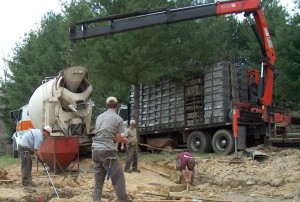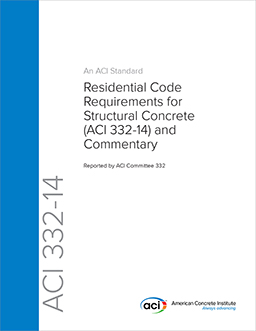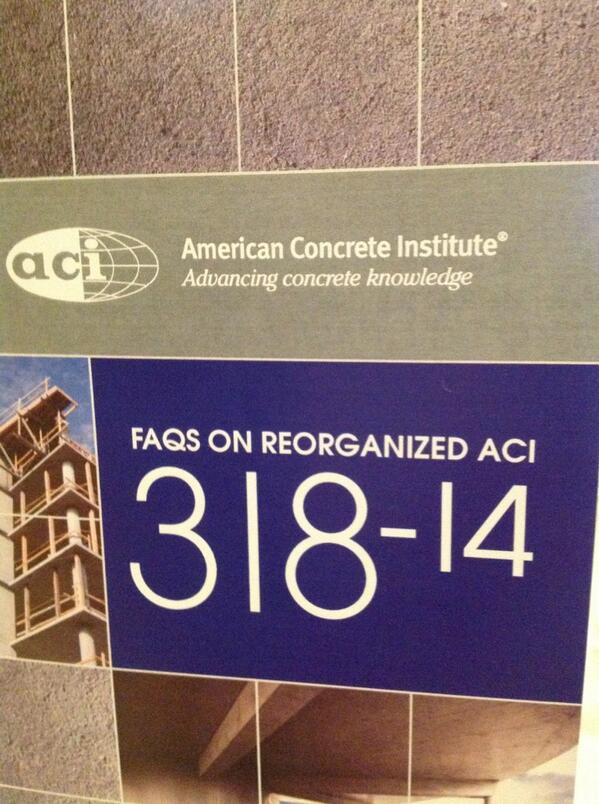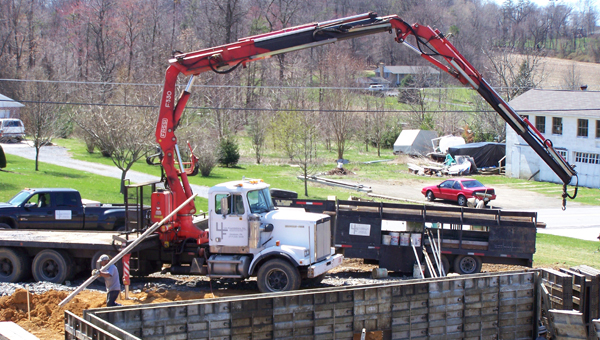Code Corner: Impact of Codes
WHAT IMPACT ARE THE CURRENT CODES, REGULATIONS , AND STANDARDS HAVING ON YOUR COMPANY?
The latest information on regulations, codes and standards that we have been tracking and working with has been prepared for your reference. What impact are these having on your company? What will be the largest hurdles in your implementation and preparation plans?
OSHA Proposed Rule to Extend Compliance Dates for Crane Operator Certification
OSHA has issued a proposed rule to extend the compliance date for the crane operator certification requirement by three years, to Nov. 10, 2017. The proposal would also extend the phase-in requirement for employers to ensure that their operators are qualified to operate the equipment. OSHA issued a final standard on requirements for cranes and derricks in construction work on Aug. 9, 2010. The standard requires crane operators on construction sites to meet one of four qualification/certification options by Nov. 10, 2014. After OSHA issued the standard, a number of parties raised concerns about the

qualification/certification requirements. After conducting several public meetings, OSHA decided to extend the enforcement date so that the certification requirements do not take effect during potential rulemaking or cause disruption to the construction industry.
Comments must be submitted by March 12, 2014 and may be submitted electronically at www.regulations.gov, the Federal e-Rulemaking Portal or by facsimile or mail. See the Federal Register notice for submission details and additional information about the proposed rule.
ACI Releases Latest Version of ACI 332-14
 After a significant development timeline, ACI’s 332 Residential Concrete committee completed the necessary steps for publishing the latest form of this contractor-friendly code, ACI 332-14 – Code Requirements for Residential Concrete. Developed initially in 2004, this fourth cycle for the code brings forward major changes to the sections on concrete durability and prescriptive footing design while continuing to evolve other sections of the code for better reference and consistency throughout the industry.
After a significant development timeline, ACI’s 332 Residential Concrete committee completed the necessary steps for publishing the latest form of this contractor-friendly code, ACI 332-14 – Code Requirements for Residential Concrete. Developed initially in 2004, this fourth cycle for the code brings forward major changes to the sections on concrete durability and prescriptive footing design while continuing to evolve other sections of the code for better reference and consistency throughout the industry.
Concrete durability has been governed in prior code editions in a similar fashion to that of the International Residential Code. With the 2014 edition, however, the committee significantly updated its direction by achieving a concrete durability section more similar to that of ACI 318. This updated section now considers the full range of durability issues for concrete including sulfate exposure, exposure to de-icing solutions and much more. An extensive commentary section has been authored to assist in the selection and direction of the critical exposure issues and the resulting minimum concrete mixture design requirements to be considered.
Prescriptive footing design was also dramatically overhauled in this version of the code to bring it more in relationship to the method of designing foundation walls. An expanded set of footing tables introduces greater selection for the user and reference to a broader range of variables. The user will find the footing sizes and prescriptive requirements for steel to be in step with the International Residential Code but with improved functionality and broader selection criteria.
PUBLIC COMMENT PERIOD ON PROPOSED WORKPLACE INJURY TRACKING RULE CLOSES ON MARCH 10
OSHA has announced that the comment period on the proposed rule to improve workplace safety and health through improved tracking of workplace injuries and illnesses will close on March 10, 2014. The comment period was originally scheduled to close March 8. However, this date falls on a Saturday. OSHA will accept comments submitted March 10 as timely submittals.
The proposed rule would amend OSHA’s record keeping regulations to add requirements for the electronic submission of injury and illness information that employers are already required to keep. Comments may be submitted electronically at www.regulations.gov, the Federal eRulemaking Portal or by mail or facsimile. See the Federal Register notice for more details (Docket No. OSHA-2013-0023).
AMERICAN CONCRETE INSTITUTE ANNOUNCES THE REORGANIZED ACI 318-14
 ACI’s 318 committee is finalizing a completely reorganized ACI 318-14: Building Code Requirements for Structural Concrete. ACI 318 is one of the most essential and valuable standards with respect to the design of concrete structures, and is published every three years. Scheduled for publication in late 2014, the reorganized 318-14 is organized from an engineer’s perspective. By focusing on member design, ACI 318 requirements will flow more intuitively and have fewer cross-references. Significant highlights include: o Greater ease of use; o Improved logic and flow of information; o Member-based organization to quickly locate relevant code information; o Construction requirements centralized in one chapter. “ACI is proud and excited to announce the reorganized ACI 318-14 will be published later this year,” said Randall W. Poston, Ph.D., P.E., S.E., Chair, ACI Committee 318. “This first major reorganization of ACI 318 since 1971 represents nearly a decade of work and will feature improved language and style consistency, more expansive use of tables and charts and be organized so that engineers have increased confidence they have satisfied all necessary code requirements.” This revolutionary work for the general concrete building code should make its impact promptly on the market. The member design concept will be quite familiar to contractors and designers involved through the CFA and experienced with ACI 332 as this is the format selected for that code from its inception in 2004. More information on this code and the remaining process to prepare it for publication can be found at ACI’s new-look website, www.concrete.org.
ACI’s 318 committee is finalizing a completely reorganized ACI 318-14: Building Code Requirements for Structural Concrete. ACI 318 is one of the most essential and valuable standards with respect to the design of concrete structures, and is published every three years. Scheduled for publication in late 2014, the reorganized 318-14 is organized from an engineer’s perspective. By focusing on member design, ACI 318 requirements will flow more intuitively and have fewer cross-references. Significant highlights include: o Greater ease of use; o Improved logic and flow of information; o Member-based organization to quickly locate relevant code information; o Construction requirements centralized in one chapter. “ACI is proud and excited to announce the reorganized ACI 318-14 will be published later this year,” said Randall W. Poston, Ph.D., P.E., S.E., Chair, ACI Committee 318. “This first major reorganization of ACI 318 since 1971 represents nearly a decade of work and will feature improved language and style consistency, more expansive use of tables and charts and be organized so that engineers have increased confidence they have satisfied all necessary code requirements.” This revolutionary work for the general concrete building code should make its impact promptly on the market. The member design concept will be quite familiar to contractors and designers involved through the CFA and experienced with ACI 332 as this is the format selected for that code from its inception in 2004. More information on this code and the remaining process to prepare it for publication can be found at ACI’s new-look website, www.concrete.org.
FMCSA Finalizes Rule to Shut Down Carriers Based on Patterns of Safety Violations
The Federal Motor Carrier Safety Administration will soon have the ability to shut down carriers based on past violations by the company’s executives.
The latest step in a long crusade to prevent shut-down carriers from reforming as new companies, the Federal Motor Carrier Safety Administration has amended regulations to allow it to shut down carriers if they are run by repeated violators.
FMCSA has had the ability to deny Operating Authority to carriers with a management staff that has been connected to shut-down carriers for more than a year. This increases that power. Previously, FMCSA needed to catch the deception during the process of issuing an Operating Authority. Now, they can shut down the carrier after it has gone into operation.
Chameleon Carriers
The so-called ‘Chameleon Carriers’ have been a thorn in the side of FMCSA for a long time. The agency has come under repeated criticism from Congress for failing to prevent such blatant disregard for the rules.
Essentially, before FMCSA began actively fighting it, if a carrier was hit with too many violations and started to get attention from the FMCSA they would close the business. Alternatively, their violations would actually pile up to the point where FMCSA would shut them down. The company would then reform under a new name and a new DOT number.
The company would be effectively identical: same drivers, same managers, same vehicles.
Pre-CSA, FMCSA did not have the resources to track and monitor this behavior. Unfortunately, chameleon carriers — unsurprisingly — cause a disproportionate number of accidents.
MAP-21
The 2012 Transportation Spending Bill, known as MAP-21 required that FMCSA put new systems in place to prevent abuse. Last year, FMCSA administrator Anne Ferro testified to Congress that these rules were on the way.
New rules, written to comply with the requirements of MAP-21 have been rolled out in stages. When the rules announced this week go into effect, FMCSA will have the following powers concerning chameleon carriers:
- Prevent carriers from obtaining operating authority if they share a significant proportion of management with a previously shut down carrier.
- Prevent carriers from obtaining operating authority if they use vehicles from a previously shut down carrier.
- Shut down a carrier for failing to disclose that officers were in control of a previously shut down carrier.
- Revoke Operating Authority from a carrier if they share a significant proportion of management with a previously shut down carrier. (This is effectively an unappealable shut down order)
Timeline
The Final Rule was published in the Federal Register on January 22. It will become effective on February 21. While it will be an effective tool to wipe out chameleon carriers, the new rule shouldn’t affect compliant carriers in any way.
Industry Input
The rule has a lot of support from within the industry as chameleon carriers are an annoyance at best and a danger at worst for compliant carriers. By violating regulations, chameleon carriers are able to undercut their law-abiding competitors on price. They also cause accidents as their vehicles are often dangerously, poorly maintained.
The response to chameleon carrier accidents by officials and state and Federal governments is to increase enforcement for everyone. This has given the industry a strong desire to be rid of this problem.
The rules, however, were tweaked in response to industry input during the rulemaking process. Many felt the original rules were too vague and gave FMCSA the ability to enforce them too broadly. FMCSA clarified the Final Rule in response to these concerns.
FOR MORE INFORMATION
For more information, contact Ryan Fagen or Matt Wrobel of Foley Carrier Services, LLC – A BirdDog Company
Colt Gateway, South Armory 140 Huyshope Avenue, 2nd Floor Hartford, CT 06106 Direct: (860) 815-0735 email: Ryan.Fagen@foleyservices.com, or Matt.Wrobel@foleyservices.com







